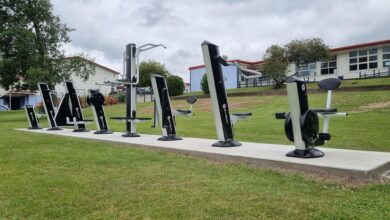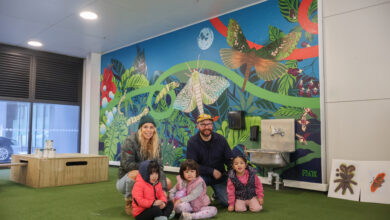
Timetables are an essential component of education, as they structure curriculum delivery. A timetable can therefore reveal what schools value, as they are a method of allocating resources.
For secondary schools in particular, timetables can become inflexible and restrictive as teachers and subjects become more specialised. Traditional secondary school timetables are often organised along subject lines. For decades, this method has resulted in complaints of siloed teaching and learning. Subjects are taught in discrete blocks, with few opportunities for students to make connections between different subjects and topics. These types of timetables have remained unchanged for much of New Zealand’s education history, and reflect values from an era where the purpose of education looked very different to the current day.
Read the latest print edition of School News online HERE.
Recently, educators and leaders have begun questioning this traditional timetable. Many schools are recognising that traditional timetables are not fit-for-purpose, being misaligned with school visions and values. In response, some schools are introducing timetable innovations, alongside associated changes in pedagogy.
In this special report, School News explores the reasons schools are seeking change, what these innovations look like, the process of implementing timetable changes, and the outcomes they deliver for staff and students.
Changing values
Interrogating the traditional timetable means interrogating the values that underpin education itself. What we teach to young people reflects how we, as a society, see ourselves. What is the role of a citizen? What does it mean to be a part of Aotearoa New Zealand? These broad philosophical questions are tied up in our education system.
The education system in New Zealand has its roots in the colonial era. At the time, the primary purpose of education was to promote assimilation with Pākehā cultural identity and values. The government followed a distinctly British model of national identity, and schools were tasked with creating “civil”, “moral” citizens and productive workers.
It’s this environment that established our normative ideas of what a school and classroom should be like. The society of this time had rigid hierarchies and authoritarian values, which we can see in more “traditional” school structures and inflexible timetables.
Now, the New Zealand Curriculum (2007) is the overarching policy document which sets out our national vision for education, revealing our modern values. Every teacher is familiar with the vision, values and principles of the NZC, which outlines our collective hope for every tamariki in New Zealand.
In brief, through their journey at school, young people should become confident, connected, actively involved, lifelong learners. They will value excellence, innovation, inquiry, curiosity, diversity, equity, community, participation, ecological sustainability, integrity and respect. They will be competent in relating to others and self-management; be creative, critical and metacognitive thinkers; be competent users of language, symbols and texts; and actively participate and contribute to their communities.
School decisions should be underpinned by the principles of Te Tiriti o Waitangi, high expectations for learners, cultural diversity, inclusion, learning to learn, community engagement, coherence, and future-focus.
It’s clear then, that the expectations of modern Aotearoa for its young people have changed drastically from the time when our education system was established.
However, although our collective values and ideals have changed, many of our education structures and systems–including timetables–have not.

Matching procedure to policy
Despite the NZC’s clear intentions for our young people, not everyone is supported to achieve the goals of our curriculum. Many schools have begun to identify the disconnection between their stated policy and goals, and the procedure of how teaching and learning is conducted.
NZCER researchers Jan Eyre and Sophie Watson note in their 2021 paper, It’s time: Transformational timetabling practices, that students and staff may feel constrained by existing timetables, which control the opportunities available for teaching and learning.
That may be because traditional timetables, which allocate periods of time to discrete subjects taught by single teachers, express visions and values that don’t align with the school’s identity. The authors note that these traditional timetables can be interpreted as reinforcing beliefs of subject hierarchies, and the values of discipline and order.
But according to the NZC, schools should construct their local curriculums on the principles of coherence and learning to learn—that is, schools should encourage students to “make links within and across learning areas”, and students should “reflect on their own learning processes to learn how to learn.” These principles can be seen as fundamentally incompatible with a traditional timetable and pedagogy, which separates subjects from each other and views the teacher as the ultimate source of knowledge.
Developing localised timetable innovations
Eyre and Watson used five schools as case studies on timetable innovations. They found any timetable changes in schools were the end-product in a long process of interrogating values, beliefs and practices.
Some schools who participated in the paper were newly established, so built their vision and values from the ground up. Schools that altered their traditional timetables did so to address ongoing unmet needs, and had goals such as improving student equity, engagement, achievement and choice.
Schools began by interrogating their sense of purpose, aims and values. A strong understanding of these attributes was first required to ensure alignment of practice and process with desired outcomes. Effective community engagement and input was related to the success of pedagogical and structural changes, as these needed buy-in and understanding from all stakeholders.
A school’s purpose, aim and values were expressed in formal and informal ways, such as explicit mission statements, logos, icons and mottos. These provide a means of communicating and reminding stakeholders of the shared goals and culture of the school, and therefore the purposes of certain processes. Once the desired outcomes were understood, timetable innovations followed. This meant that though each school’s timetable was unique, there were similarities between innovations.
Common innovations included extended advisory / form / whānau time, longer learning periods, and implementing integrated learning modules.
Whānau classes were implemented to improve students’ sense of belonging. Classes are typically small, and one teacher oversees the students throughout their school journey. Some schools had mixed levels in their whānau classes which facilitated tuakana-teina relationships, and provided students with mentorship and advice. These classes often had their own curriculum too, which might consist of foundational skills like literacy and numeracy.
Longer learning periods were implemented to facilitate deeper learning in class, which in turn led to differences in teaching delivery. In some cases, these longer periods were used to deliver innovative pedagogical models like integrated learning modules. These typically combined many subjects under one “topic” and could be mixed levels and ability.
Specialist teachers often collaborated and worked together to deliver these modules, with the aims of improving student engagement and providing relevant contexts for authentic learning. This also improved student agency and choice, as students felt they had more say over what they learned and their progression.

Form and function
Many schools who implemented timetable innovations did so out of a desire to align curriculum delivery with their stated goals. Changes in pedagogy often necessitated changes in timetable and/or teaching processes.
Appropriate support is crucial to ensuring successful implementation of system-wide changes. This means appropriate professional learning and development to support timetable innovations. Eyre and Watson found that regular, ring-fenced time was necessary to effectively implement new pedagogies and timetables, and that more PLD sessions was better than fewer when done effectively.
Teachers’ existing workload also needs to be accounted for to avoid overloading or overwhelming staff. One effective strategy was to model and enforce clear work-life boundaries such as ensuring teachers left by a certain time each day. It was also important to foster a learning culture among teachers, so they felt comfortable trying new approaches.
When implementing transdisciplinary approaches to learning, it was important to facilitate community and collaboration between teachers. Leaders might also wish to consider the available learning spaces in the school. Teachers working in traditionally structured classroom settings found collaboration could be difficult, and teachers working in innovative learning environments needed strong support to enact the desired vision for teaching and learning. Teachers and the wider school community should also be regularly reminded of the “why” behind process changes to support buy-in.
Each school in Eyre and Watson’s study implemented appropriate innovations for their context. This might mean strengthening vocational pathways, or supporting offsite learning with the timetable. Other schools provided opportunities for students to be extended with their redesigned curriculum and timetable, or else ensured that students didn’t have to restrict themselves to certain pathways with their subject choices.
The timetable is therefore a tool for structuring and enacting the vision of teaching and learning in the school. Timetable innovations can be transformative for the community, as long as they are done purposefully, with appropriate support and clear communication. A system-wide change requires strong leadership, innovative thinking, careful planning, and meaningful collaboration across all stakeholders.
Given the upcoming changes to the curriculum, now may be the right time to reflect on your school or kura’s current learning process and timetable. Is it fit for purpose, and will it remain so in the near future? Though changes can be challenging to juggle alongside existing workloads, with strong vision, determination and leadership, any system can be reimagined for the better.









